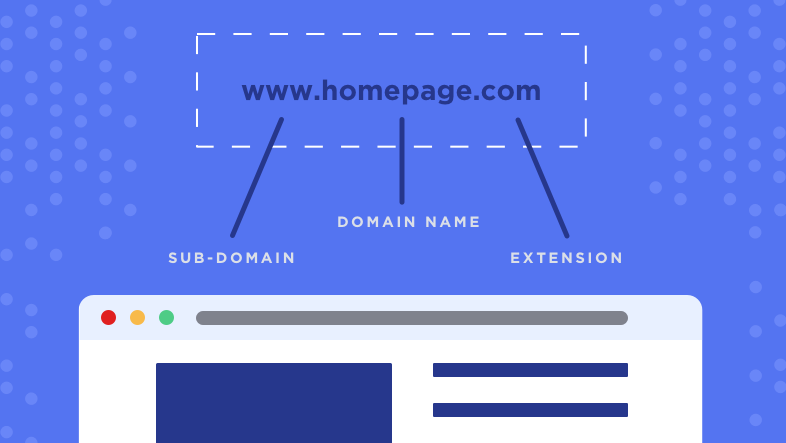
The average shopper doesn’t need to know much about the inner workings of the internet in order to find the products they want to buy. Most just do a quick web search or visit an online marketplace directly. If you’re a merchant with a traditional, offline store looking to expand into ecommerce, it’s easy to get overwhelmed when trying to translate tech jargon or understand how your website works together with the internet as a whole. The same goes for an entrepreneur doing research on starting a new online business — it can be hard to know where to get started.
In this guide, we’ll provide a basic overview of how domains and the Domain Name System (DNS) work together to serve an ecommerce site to the world. We’ll focus on the areas that are important to someone getting started selling online.
Chapter 1: Domain Names
Similar to how a street address is used to locate a home or business in the real world, a domain name is a simplified web address used to find a particular website on the internet.
What’s in a Domain Name?
All domains consist of at least a name (like your store’s name) and an extension (like .com or .net). Some domains also include a subdomain, like www or shop. Below, we’ll break these sections down by what they are and how they’re used.

Second-Level Domain (Name)
The most unique and identifiable part of a domain name is the second-level domain (SLD), which is where you usually find a store name or a keyword relating to a business. For example, in the domain bigcommerce.com, “bigcommerce” would be the SLD. SLDs can be any combination of letters, numbers, and dashes, up to 63 characters long.
Top-Level Domain (Extension)
The extension, usually called the top-level domain, is the last part of a domain name. Common examples include “.com”, “.net”, and “.org”. TLDs are generally used to identify the purpose of the domain. The “.com” TLD is the most common. It stands for “commercial” and is primarily used for business-oriented sites.
You may also see regional variations, like “.co.uk” or “.co.au”. There are a limited number of TLDs available for the public to use, and they are regulated by ICANN. Some domain registrars are limited to which TLDs they are able to reserve domains for.
Together, the second and top level domains make up the “domain name”.
Subdomains
Domains can also have a name before the main domain name, called a subdomain. These can be used for different areas of a site. The most common subdomain—and one you’ve probably seen often—is “www”. This was originally meant to designate the website portion of a site. Subdomains like “shop” and “store” are often used for the ecommerce section of a larger site.
So for example, you might have your business’ content on “www.yourstore.com” and the ecommerce portion on “shop.yourstore.com”. BigCommerce stores without a custom domain name have a public address that is a subdomain of “mybigcommerce.com”, such as “your-store.mybigcommerce.com”.
Why would I use a subdomain for my store? For an existing site without commerce functionality, like a content-driven blog or informational site, it can be costly in both time and money to redesign or replatform the entire site. Building and launching an ecommerce site on a subdomain is a faster, cheaper alternative.
Making major changes to an existing site can also have a negative effect on established SEO. Using a subdomain for your store can be a low-risk way to introduce commerce functionality without disrupting the rest of your site.
Did you know? In BigCommerce, stores with a custom domain can be configured to always include the “www” prefix, or automatically redirect to your domain without the “www”. See Store Settings to learn more about this and other website-related settings.


